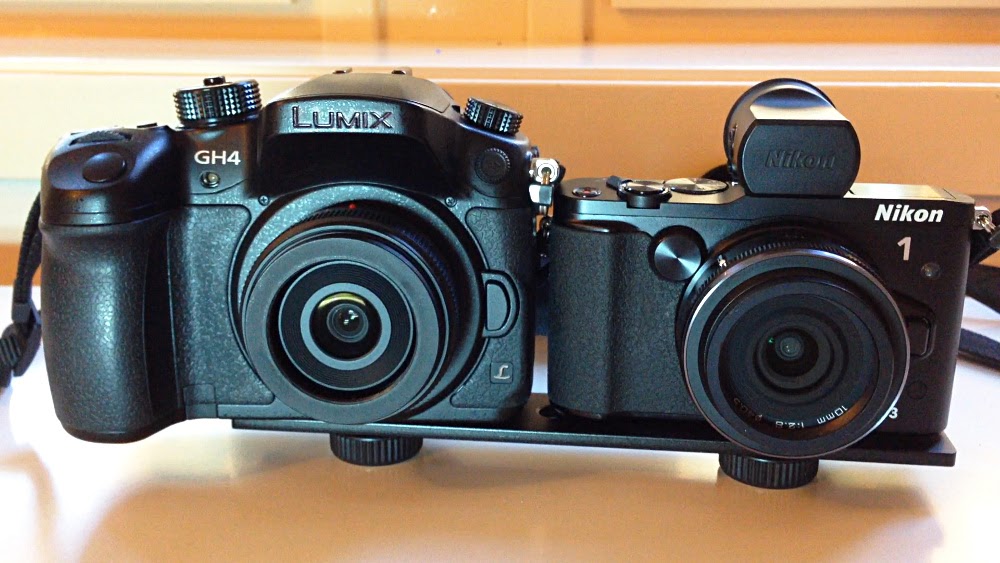However, one problem, especially when using the lens on the Nikon 1 V3. I guess most serious users of the V3 will want to have the grip mounted. That leaves you with a thin, flimsy tripod mount which is not capable of supporting a long lens like the Nikon 1 70-300mm f/4.5-5.6.
You could remove the grip, but that leaves the problem that there is very little room to mount a tripod, as the lens is large and takes up space which is normally needed by the tripod head.
However, the obvious solution is to get the optional tripod mount for the lens itself, TR-N100. I think this mount should have been included with the lens, but it needs to be bought as a separate item. The availability was poor, so I bought it from Japan via Ebay. Here is the box, with a Nikon 1 10mm f/2.8 for size reference:



